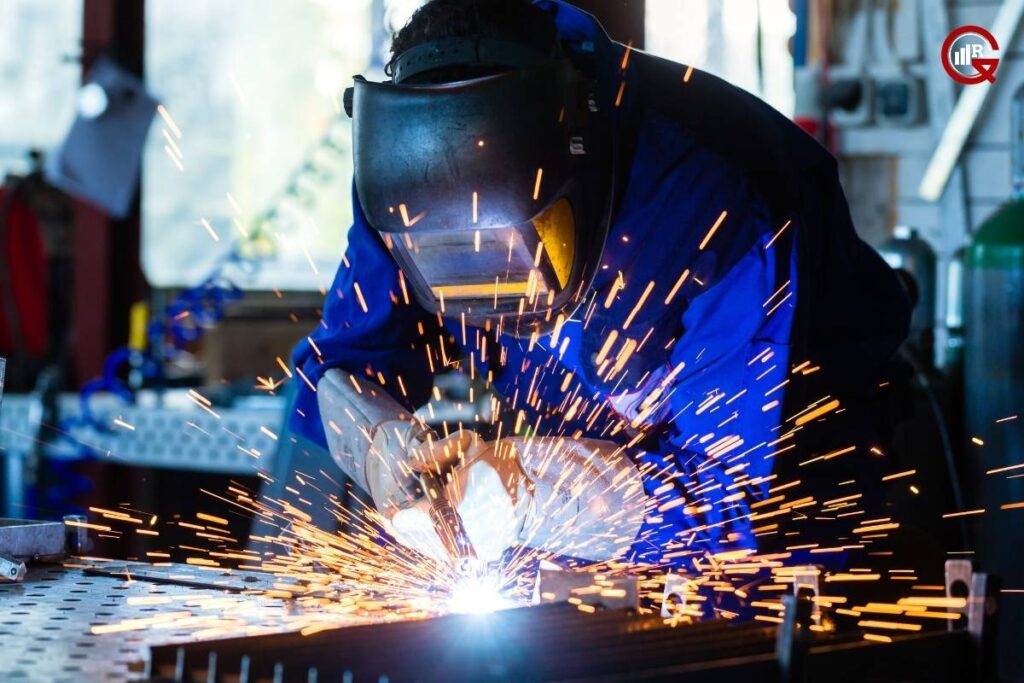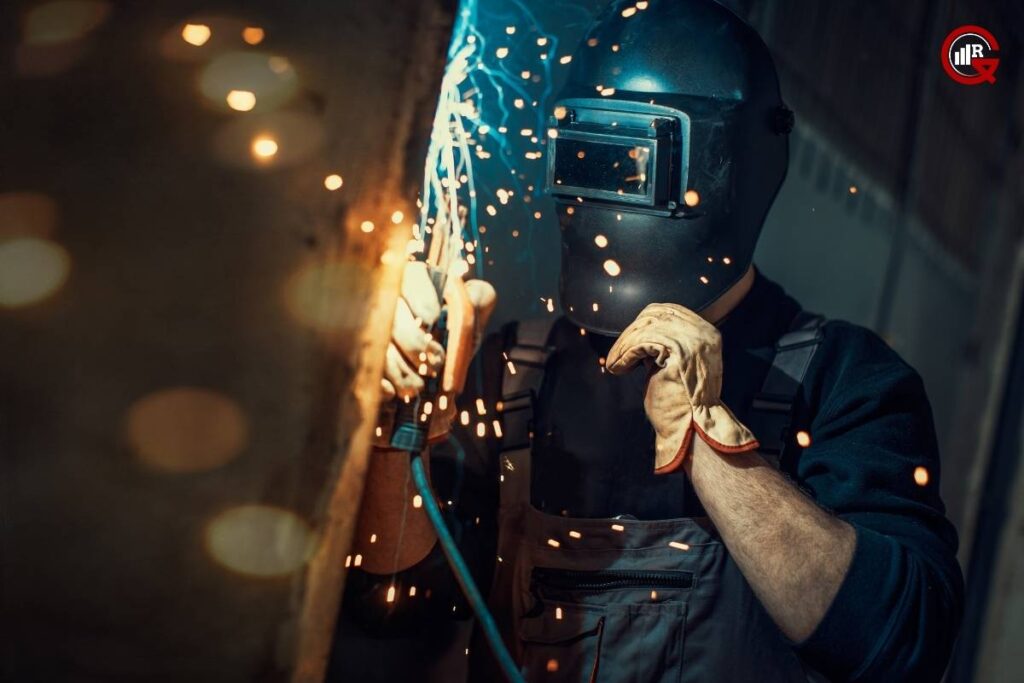High-frequency welding (HF Welding) is a specialized welding technique that utilizes electromagnetic energy to join materials together. This process has gained widespread popularity due to its versatility, efficiency, and ability to produce high-quality welds in various industries. In this comprehensive guide, we will explore the principles behind high-frequency welding, its applications across different sectors, and recent advancements in the field.
Principles of HF Welding:
High-frequency welding, also known as HF welding or radio frequency (RF) welding, operates on the principle of generating an alternating electric field between two electrodes. When an electric current passes through these electrodes, it produces a rapidly oscillating electromagnetic field. This field causes the molecules within the materials to align and generate heat through molecular friction, leading to localized melting and fusion of the materials at the interface.
There are two primary methods of radio frequency welding: contact and induction welding. In contact welding, the materials to be welded are placed between two electrodes, and pressure is applied to create a strong bond. In induction welding, an induction coil generates the electromagnetic field, and the materials are heated directly without the need for physical contact with the electrodes.
Applications of Radio Frequency Welding:
Radiofrequency welding finds applications across a wide range of industries, including automotive, aerospace, electronics, medical devices, and packaging. Some common applications include:

Automotive Industry: HF welding is used for manufacturing automotive components such as fuel tanks, air ducts, door panels, and seat covers. It enables the production of lightweight, durable, and leak-proof assemblies with high structural integrity.
Packaging Industry: In the packaging industry, high-frequency welding is employed to seal plastic films and create pouches, bags, blister packs, and other packaging materials. It offers fast and reliable sealing, ensuring product freshness and integrity.
Medical Devices: High-frequency welding is widely utilized in the production of medical devices such as blood bags, IV bags, surgical drapes, and inflatable splints. It enables the manufacturing of sterile and hermetically sealed products essential for patient safety and hygiene.
Electronics Industry: Radio frequency welding is used for bonding electronic components, sealing electronic housings, and manufacturing flexible circuits. It provides precise control over the welding process, ensuring the integrity and functionality of electronic devices.
Textile Industry: In the textile industry, radio frequency welding is employed for joining synthetic fabrics, creating seams in garments, and producing inflatable structures such as air mattresses and inflatable boats. It offers efficient and reliable bonding without the need for adhesives or sewing.
Recent Advancements in High Frequency Welding:
Recent advancements in HF welding technology have focused on improving efficiency, precision, and flexibility. Some notable developments include:

1. Advanced Control Systems:
Modern HF welding machines feature sophisticated control systems that allow for precise adjustment of welding parameters such as frequency, power output, and electrode pressure. This enables optimal performance and consistent weld quality.
2. Adaptive Welding Algorithms:
AI-driven welding algorithms have been developed to analyze real-time data and optimize welding parameters based on material properties, geometry, and environmental conditions. These adaptive algorithms enhance process efficiency and adaptability.
3. Multi-Material Welding:
Radio frequency welding has evolved to accommodate the welding of dissimilar materials, including metals, plastics, composites, and textiles. New welding techniques and materials compatibility studies have expanded the range of applications and design possibilities.
4. Energy-Efficient Designs:
Advancements in transformer design, electrode materials, and cooling systems have led to energy-efficient HF welding machines with reduced power consumption and environmental impact. These designs promote sustainability and cost-effectiveness.
5. Remote Monitoring and Diagnostics:
Radio frequency welding systems equipped with IoT sensors and connectivity features enable remote monitoring, predictive maintenance, and real-time diagnostics. This enhances equipment uptime, productivity, and operational efficiency.
6. CLaser High-Frequency Welding:
A recent advancement in radiofrequency welding is the integration of laser technology, known as laser radio frequency welding. This technique combines the precision of laser welding with the heating capabilities of radio frequency welding, offering superior control over the welding process. Laser high-frequency welding is particularly suitable for joining thin and delicate materials, such as medical implants, electronic components, and automotive sensors. It provides clean, precise, and aesthetically pleasing welds with minimal heat-affected zones and distortion.
7. Additive Manufacturing Integration:
Radio frequency welding is increasingly being integrated into additive manufacturing processes, such as 3D printing, to enable multi-material fabrication and assembly. By incorporating high-frequency welding techniques into additive manufacturing systems, manufacturers can produce complex, lightweight structures with enhanced strength and functionality. This integration opens up new possibilities for the design and production of customized products in industries ranging from aerospace to consumer electronics.
8. In-line Quality Assurance:
Radio frequency welding systems are now equipped with advanced in-line quality assurance features, including automated inspection cameras, sensors, and data analytics algorithms. These tools allow for real-time monitoring of weld quality, detecting defects such as porosity, incomplete fusion, and dimensional inaccuracies. By implementing in-line quality assurance measures, manufacturers can ensure consistent weld quality, reduce scrap rates, and meet stringent industry standards.
Radio Frequency (RF) Welding
9. Sustainable Materials and Processes:
As sustainability becomes a priority for manufacturers, radio frequency welding technology is being adapted to accommodate sustainable materials and processes. This includes the development of bio-based polymers, recycled plastics, and eco-friendly adhesives compatible with radio frequency welding. Additionally, efforts are underway to optimize energy usage, minimize waste generation, and reduce carbon emissions associated with high-frequency welding operations, contributing to a more sustainable manufacturing ecosystem.

10. Integration with Industry 4.0:
Radio frequency welding is being integrated into the broader framework of Industry 4.0, leveraging digitalization, automation, and connectivity to create smart manufacturing environments. By connecting high-frequency welding machines to networked systems, manufacturers can achieve real-time data exchange, predictive maintenance, and adaptive process control. This integration enables agile production workflows, just-in-time manufacturing, and seamless collaboration across the supply chain, enhancing productivity and competitiveness.
11. Emerging Applications in Renewable Energy:
HF welding technology is finding new applications in the renewable energy sector, particularly in the fabrication of solar panels, wind turbine components, and energy storage systems. By enabling the efficient assembly of lightweight and durable structures, high-frequency welding contributes to the development of sustainable energy solutions. Additionally, advancements in materials science and process optimization are driving innovation in renewable energy applications, paving the way for increased adoption of HF welding technology in this critical industry.
Conclusion:
High-frequency welding technology continues to evolve and revolutionize various industries by offering fast, efficient, and reliable joining solutions. From automotive manufacturing to medical device production, HF welding plays a crucial role in ensuring product quality, performance, and competitiveness. With ongoing advancements in technology and materials science, the future of radio frequency welding looks promising, with opportunities for innovation and growth in diverse applications.






